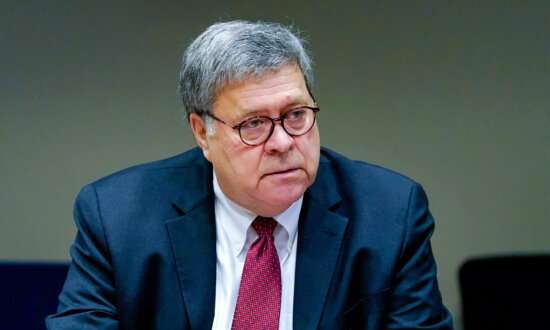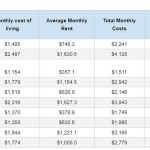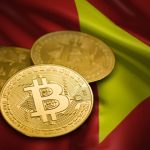Authored by Conor Gallagher via NakedCapitalism.com,
The Riyadh – Tehran detente deal could be a major win for not only the Middle East but also larger projects seeking more integration of greater Eurasia. If the deal is implemented, China’s Belt and Road Initiative could become a key component of the economic futures of both Saudi Arabia and Iran. The rapprochement could also pay dividends for the International North-South Transport Corridor (INSTC) project, which runs from St. Petersburg to Mumbai in India via Azerbaijan (or the Caspian Sea) and Iran and across the Arabian Sea. The “sanction-proof” corridor connects the Indian subcontinent with Russia without needing to go through Europe while simultaneously being 30 percent cheaper and 40 percent shorter than the existing routes.
Following the announcement of the Saudi Arabia – Iran rapprochement deal brokered by China, the chairman of the Russian State Duma Committee on International Affairs Leonid Slutsky praised the deal and explained how it corresponds with Russia’s collective security concept for the Persian Gulf region. He paid particular attention to the INSTC, saying:
In this regard, I view the International North-South Transport Corridor project, which will become the key factor for positive feedback for security, stability and development in this most important region, as a strategic one. The launch of the Corridor will become a milestone event not only in logistics, but also in politics and in security architecture of the Greater Eurasia, it will become the most important economic superstructure atop the strategic basis, achieved in Beijing.
The INSTC was announced back in the early 2000s, but progress was slow until recently when the West’s actions put it into overdrive. The sanctioning of Moscow and Tehran and the severing of Europe from Russian energy created the incentive to accelerate investments by key stakeholders. The authorities in Tehran realize their centrality on the India-Russia trade route, and considering that India’s imports from Russia quadrupled last year, one can deduct the potential upside for Iran. With an investment boost from Russia, Tehran has been trying to speed up the completion of improved railway networks that will connect to the existing railways of Russia and Azerbaijan and Chabahar Port in southeastern Iran.
Yet the major impediment to the INSTC reaching its full potential remains Iranian infrastructure. Much of the transit of goods on the INSTC still takes place on roads in Iran. Much of Iran’s railway is single track, and regular container train services from Moscow to Iran have to rely on transloading.
The government in Tehran is trying to prioritize the improvement of port capacity, rail and road infrastructure, transportation terminals and the modernization of its transportation fleet. The Iran Chamber of Commerce, Industries, Mines and Agriculture is also starting a new Transports Internationaux Routiers or International Road Transport center in the southern port city of Bandar Abbas to expedite the processing of transit cargoes. However, there is a clear need for further investment in transportation infrastructure, which has been difficult due to US sanctions on Iran.
Saudi Arabia’s Finance Minister Mohammed Al-Jadaan said March 15 that Saudi investments into Iran could happen “very quickly” following the agreement to restore diplomatic ties. He added that he does not see any impediment as long as the terms of agreements are respected by Tehran.
Any Saudi economic dealing with Iran would undercut US sanctions imposed to pressure Tehran, if not violating them outright. With tens of billion of dollars in Iranian assets blocked worldwide, the prospect of Saudi investments could jumpstart the INSTC and help maintain the peace between Riyadh and Tehran.
China’s desire to keep the peace could also bring investments. Scott Ritter writes at Energy Intelligence:
With China providing infrastructure-generating investment capital through its Belt and Road Initiative, the new Iran-Saudi détente could evolve into a regional economic relationship that supplants the US-led defense relationships that have defined Middle East politics for decades.
China would have to work around US sanctions in order to increase investments in Iran, but the two countries have already found a workaround to continue the oil trade, with most being rebranded as from a third country. If a China were to up its investments in Iran, it would mark a shift. From Silk Road Briefing:
Russia has now overtaken China as the biggest investor in Iran. This follows Moscow’s conflict with Ukraine from late February last year, as a result of which Iran and Russia have strengthened their economic and investment ties. The UAE, Afghanistan, Turkey and China are the next biggest investors. Although China that was expected in Iran to be the major investor, Beijing reduced its exposure in 2022, and concentrated more on investing into the Belt and Road Initiative infrastructure such as logistics centers, border facilities etc. that would facilitate its own export capabilities to Iran and the region.
Foreign investment flows to Iran have been decreasing from 2012-13 when the volume stood at US$4.5 billion. The lowest level was recorded in 2015-16 with only US$945 million of FDI inflows. UNCTAD estimated that the volume of FDI inflows to Iran stood at US$3.372 billion, US$5.019 billion, US$2.373 billion and US$1.508 billion from 2016 to 2019.
According to the United Nations Conference on Trade and Development, Iran attracted an estimated US$1.425 billion in Foreign Direct Investment in 2021 to register about a 6% rise compared to US$1.342 billion in 2020. In 2022, however, and despite the sanctions, the total volume of investments attracted to Iran hit US$5.95 billion. Out of this figure Chinese companies invested only about US$185 million.
Additionally, Secretary of the Iranian Supreme National Security Council, Ali Shamkhani, announced on Monday that Tehran concluded an agreement with the United Arab Emirates to facilitate trade movement between the two countries using the Emirati currency, the dirham.
The UAE has not confirmed any such agreements as it would run afoul of US sanctions, which have created a financial crunch in Iran. Tehran is hoping that better ties with Persian Gulf Arab countries can help reduce that pressure. It remains to be seen how far these countries will go in order to provide Iran an economic lifeline.
But should diplomatic and economic relations between GCC members and Iran continue to improve, it could spell the end to US efforts to apply “maximum pressure” on Tehran and another nail in the coffin of US influence in the region. It would also cement Iran’s position as key nexus in new global trade routes like China’s BRI and the INSTC.

The US, by trying to put maximum economic pressure on Iran and Russia, hinting that China is next, and the ill-fated oil price cap, has only helped drive the integration of Russia, China, Iran, Saudi Arabia, and more.
Despite all the sanctions and western pressure on countries to isolate Moscow, Russian trade is on the upswing. Iran is eager to cash in on its position between India and Russia, who are rapidly increasing their trade volume. From India Shipping News:
Ruscon, a leading multimodal transport logistics provider in Russia, has significantly expanded its containerized service network from the Black Sea Port of Novorossiysk to Nhava Sheva and Mundra in west India as volumes rapidly rise.
The company, a Deli Group subsidiary, has now increased its tonnage deployments from one vessel to four vessels to provide a weekly sailing frequency on the route.
Additionally, an extra stop has been introduced at Saudi Arabia’s Jeddah Port. The service rotation already includes a call at Istanbul Port in Turkey.
According to Reuters, Russia began exporting diesel to Saudi Arabia in February after the EU enacted its embargo on seaborne imports of Russian oil. The Saudis are now expected to export the Russian diesel to other countries after some refining.
Russia’s largest ocean container carrier, Far Eastern Shipping Co., also recently added a direct Novorossiysk to Nhava Sheva route. And many other countries are jumping in and providing vessels after western sanctions forced regular mainline operators to halt operations into and out of Russia. Even the New York Times begrudgingly admits:
Ami Daniel, the chief executive of Windward, a maritime data company, said he had seen hundreds of instances in which people from countries like the United Arab Emirates, India, China, Pakistan, Indonesia and Malaysia bought vessels to try to set up what appeared to be a non-Western trading framework for Russia.
India’s imports of crude oil from Russia reached a record of 1.6 million barrels per day in February, which was more than one-third of India’s imports and more than the combined imports from traditional suppliers Iraq and Saudi Arabia.
India has been making a profit turning around and selling the refined oil to the US and EU, which are unable to purchase directly from Russia due to sanctions. The same story is occurring in North Africa, which buys up Russian crude and increases supplies to Europe as a sanctions workaround.
Russian wheat and fertilizer exports also rose in 2022 despite sanctions, much of the former going to the Middle East and North Africa (MENA) region, which is the top destination for Russian food exports. Much of the fertilizer went to INdia.
Iran and Russia are cooperating to build ships and vessels in the Caspian Sea. In October, Iran announced Moscow’s readiness to allow Iranian ships to pass through the Volga River. Russia had previously not allowed foreign ships to use the Volga River or the Volga-Don canal, but if the agreement is implemented, Iran will have access to the longest river in Europe, and have access to the Volga-Don Canal, which provides the shortest connection between the Caspian Sea and the Mediterranean.
For another look at how Western sanctions are backfiring and only drawing countries closer to countries the US is trying to isolate, take the Eurasian Economic Union (EAEU) members of Belarus, Kazakhstan, Armenia and Kyrgyzstan, which are also all being boosted by anti-Russian sanctions. From Silk Road Briefing:
It has had the unexpected effects of boosting regional GDP growth rates: in their “Regional Economic Prospects” report, the European Bank for Reconstruction and Development (EBRD), analysts noted that Kazakhstan’s 2022 GDP growth reached 3.4% instead of the previously anticipated 2%.
Part of that has been due to sanctions, with an increase in income due to the re-export to Russia of computers, household appliances and electronics, auto parts, electrical and electronic components. Exports of non-energy goods from Kazakhstan to Russia in 2022 increased by 24.8% and amounted to US$18.9 billion. …
An EAEU Intergovernmental Council meeting held in early February this year showed that the economic situation in all EAEU members states is stable, and mutual trade is growing. Anti-Russian sanctions actually significantly contribute to this growth, meaning that for EAEU members especially, as well as countries such as China and India, the attractiveness of Russia as an economic partner has grown.
India, Turkey, and Egypt are among the countries discussing free trade agreements with the EAEU. And Iran signed one in January. The primary driver for the Iran-EAEU integration is to upgrade Iran’s transport and logistics infrastructure, i.e., the INSTC.
The importance of the INSTC and its link to the Middle Corridor, which enables Russian traffic to head east via Kazakhstan to China, and vice-versa, is growing to include the entire region. At a joint press briefing with US Secretary of State Anthony Blinken in February Kazakhstan’s Foreign Minister Mukhtar Tleuberdi made it clear that EAEU economic participation is critical for Astana, and Kazakhstan would not be opting out of such a beneficial arrangement in order to please the US.
It was just another reminder of how the INSTC and Middle Corridor represent the growing integration of the EAEU, MENA, China, and India, and the US’ fading influence.
Loading…












